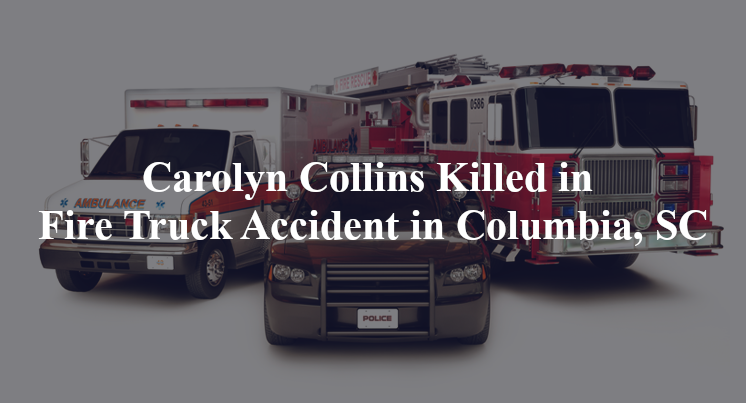Carolyn Collins Killed in Fire Truck Accident in Columbia, SC
Columbia, SC — July 12, 2025, One person was killed following accident that occurred at around 7:00 P.M. on Two Notch Road.

According to reports, a vehicle with Carolyn Collins as a passenger was traveling in the area of Two Notch Road and Decker Boulevard when it collided with a fire truck that was responding to a call.
When first responders arrived on the scene they found Collins fatally injured and she was pronounced deceased, while four firefighter were injured and transported to the hospital, but have since been released. Officials have not released an update on the status of the investigation.
Commentary by Attorney Michael Grossman
When people hear that a civilian vehicle collided with a fire truck that was responding to a call, the immediate assumption is often that the fire truck had the right of way and the civilian driver must have been at fault. But legally and practically, it's not always that simple. Emergency vehicles have privileges on the road, but those privileges come with strict responsibilities—and whether those were followed in this case remains an open question.
Right now, we don’t know the basic details that would help clarify how this collision happened. For example, did the fire truck have its lights and sirens activated? Was it traveling through an intersection against a red light? If so, was it proceeding with the caution the law requires? On the other hand, did the driver of the civilian vehicle fail to yield, perhaps unaware of the fire truck’s approach? None of that is spelled out in the report.
From a legal standpoint, emergency vehicles are allowed to break certain traffic rules—speed limits, red lights, and so on—if they do so in a safe and controlled manner. That means slowing down at intersections, making sure the path is clear, and taking into account how quickly other drivers can reasonably react. I’ve worked on cases involving emergency vehicles before, and one common issue is the assumption that sirens automatically clear the way. But depending on weather, road layout, and surrounding noise, civilians may not hear or see the vehicle until it’s too late to respond safely.
It’s also worth pointing out that the fire truck was carrying multiple personnel, and four firefighters were injured. That suggests the vehicle was in motion at the time and probably moving at speed. Was the truck entering the intersection on a blind turn? Was visibility an issue? Did the vehicle have a dash camera or event recorder? Those are the kinds of details that help determine whether the fire truck was operating within the bounds of safety—or whether a preventable misstep occurred.
At this point, the investigation is still underway, and we’re left with a set of crucial, unanswered questions. But getting to the truth will require more than assumptions—it will take a serious review of physical evidence, radio logs, dash cam footage, and possibly witness accounts.
Key Takeaways:
- Emergency vehicles have the right to break certain traffic rules—but only if they do so with caution and regard for others’ safety.
- It’s unclear whether the fire truck had its lights and sirens on, or whether it entered the intersection in a safe manner.
- Civilian drivers must yield to emergency vehicles, but only if they’re aware of the vehicle’s presence and have time to react.
- Evidence like dash cams, radio records, and intersection data will be key to determining fault.
- The public deserves answers not based on assumptions, but on a full accounting of how the crash really unfolded.

“These are essential reads for anyone dealing with the aftermath of a truck wreck”– Attorney Cory Carlson